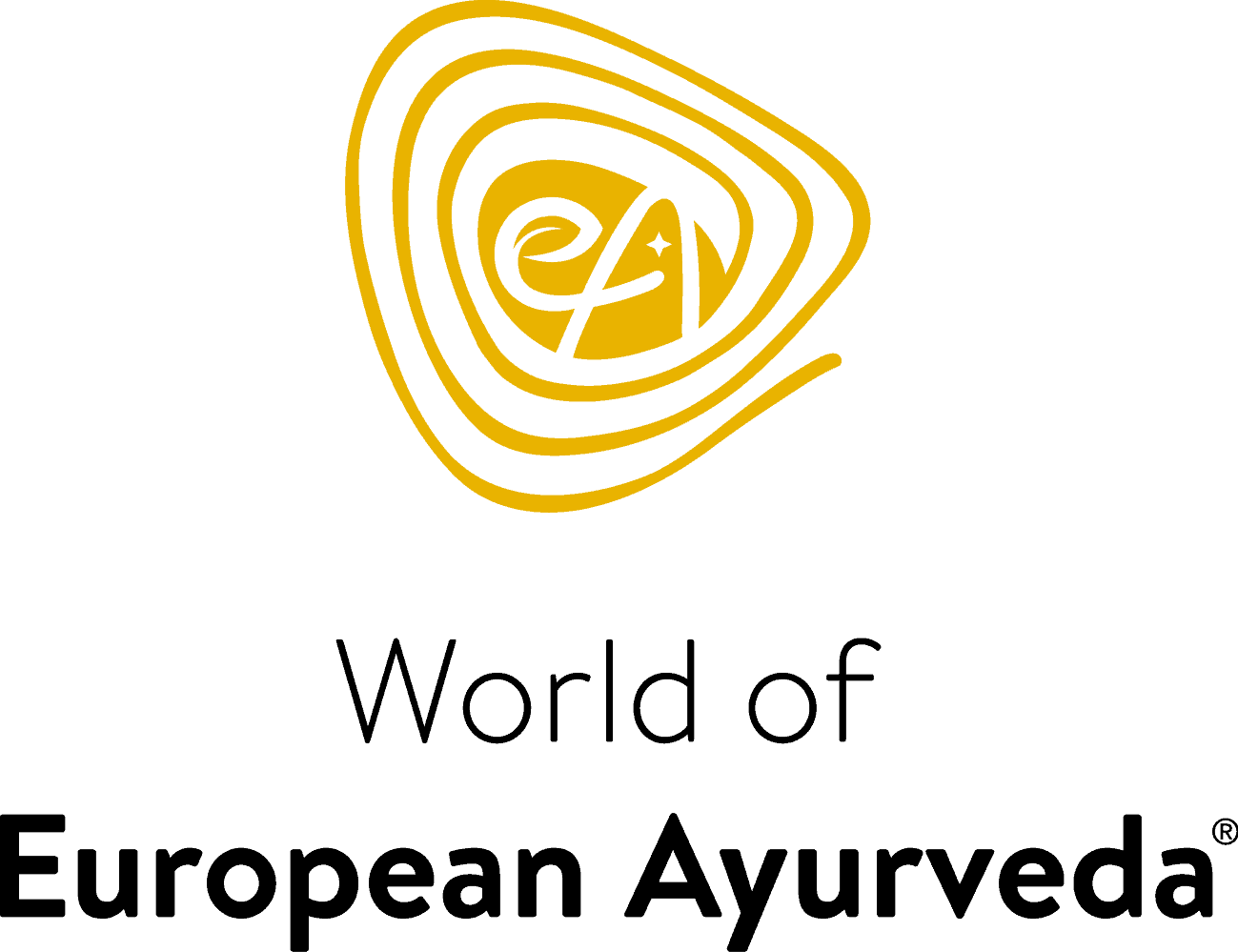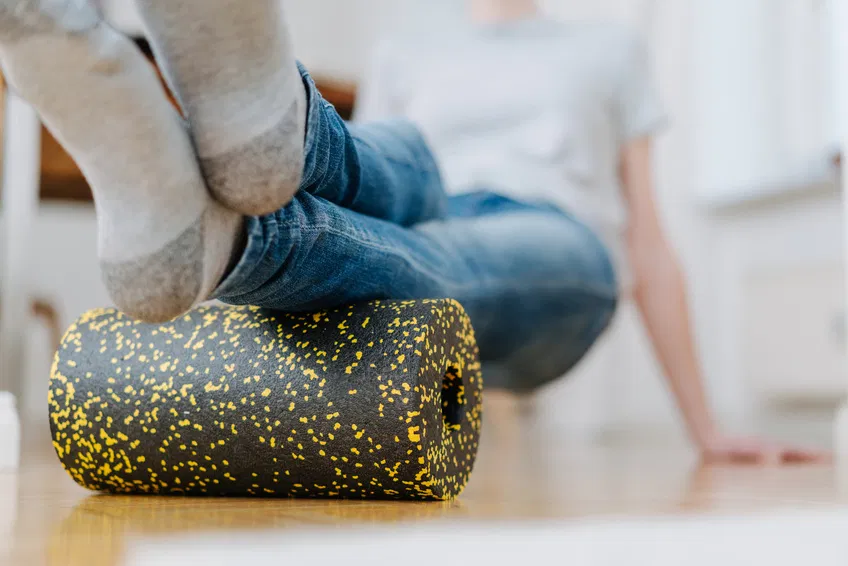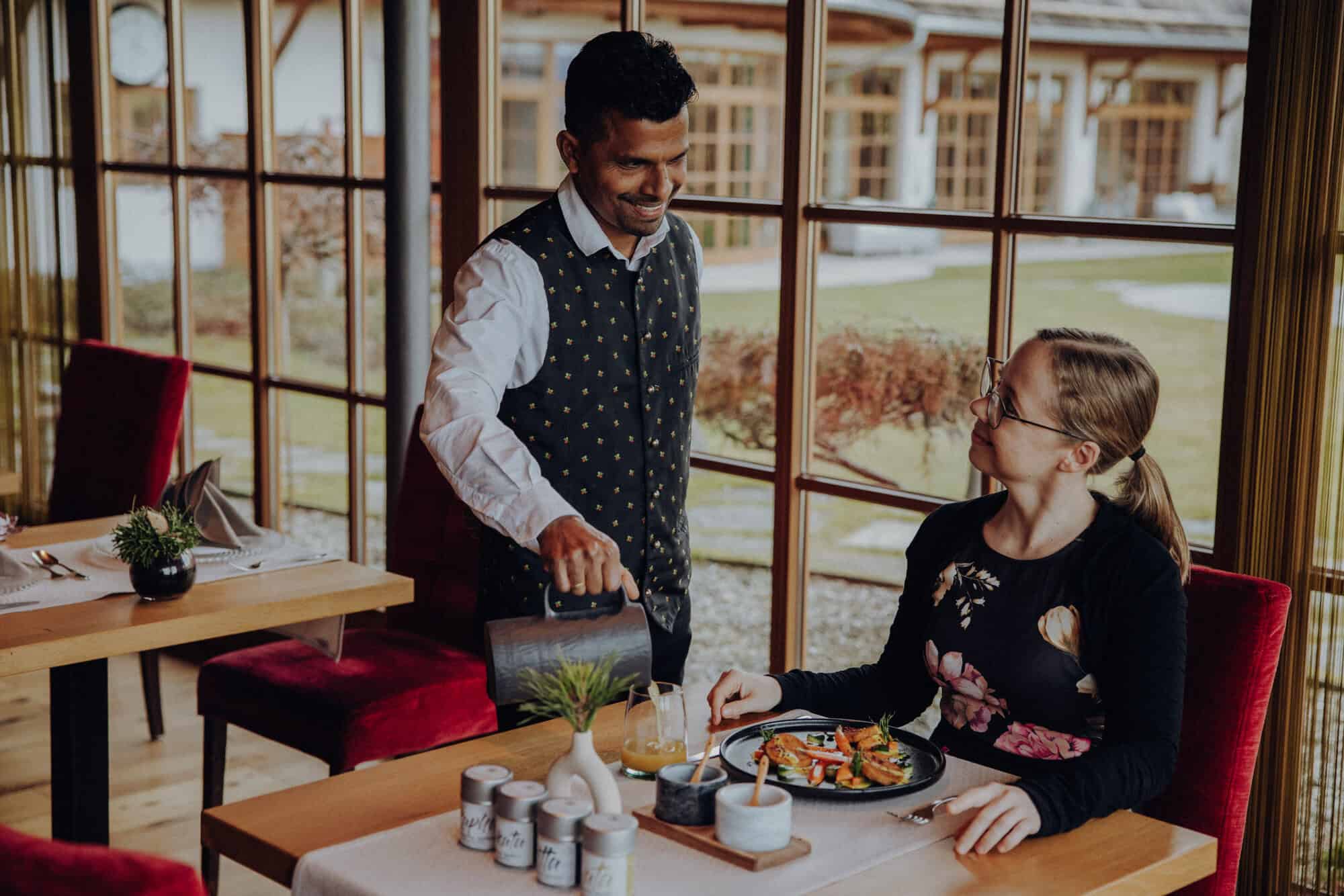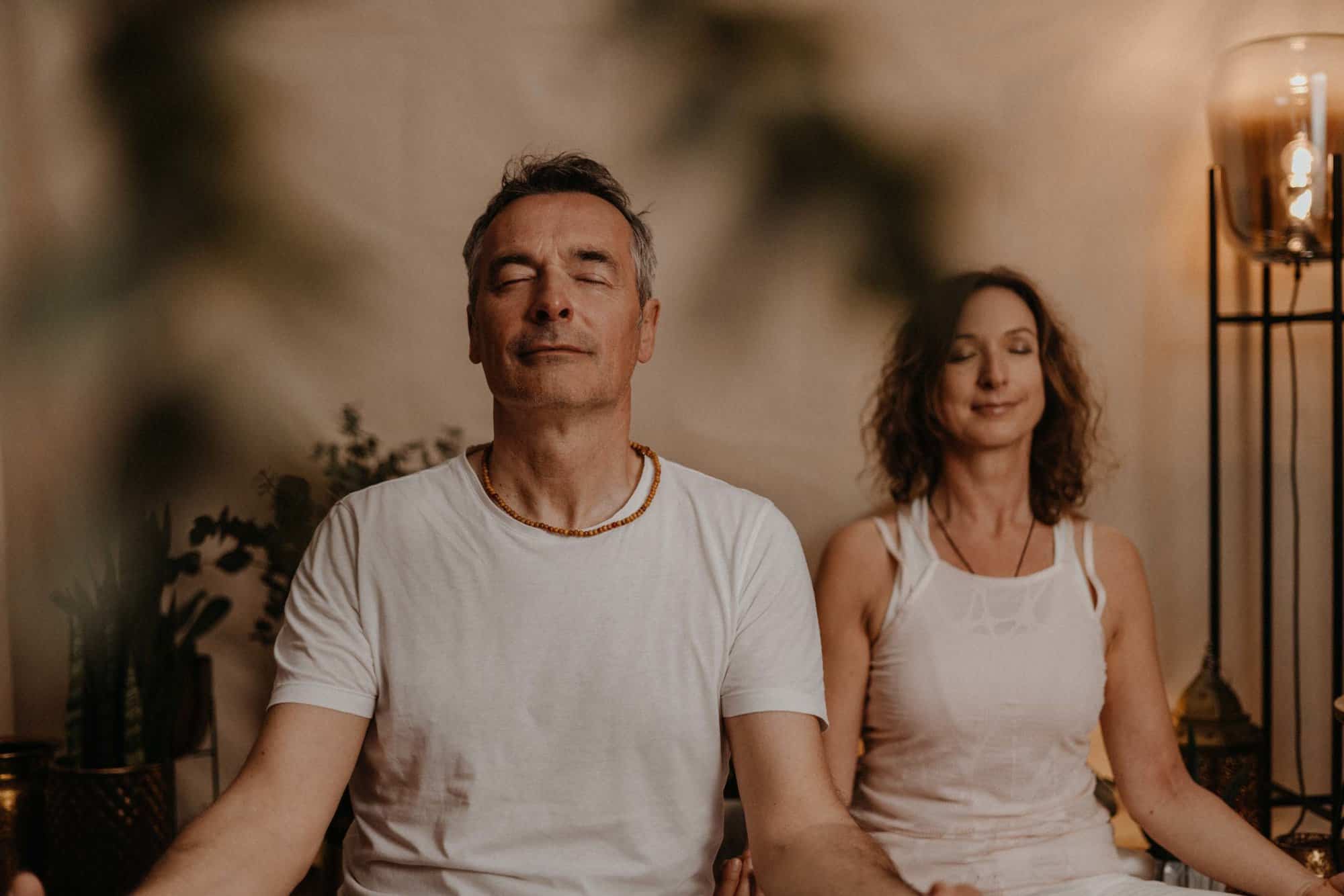Whether classical hatha yoga, yin yoga or other styles: basically every yoga practice is good for the connective tissue. The importance of these so-called fasciae is undisputed - but what exactly is fascia yoga and what does it do? What are the best yoga exercises for the fascia and do you need a fascia roller? You can find out all about it here.
What is fascia training?
Fascia is the connective tissue of 1-3 mm thick collagen and elastin fibres that runs throughout the body. The fibres connect and surround muscles, tendons and nerves. Strictly speaking, there is only one fascia - you cannot find a beginning or an end in fascia tissue.
If we make very one-sided movements over a long period of time and the tissue is only rarely stretched, sooner or later the fasciae stick together and harden. Then it is high time to loosen the connective tissue again with fascia yoga. This combines the sub-areas of a classic fascia training. This consists of four components:
- Stretch
- Revive
- Feel
- Springs
You might be wondering why it's so important to take care of your fascia on a regular basis. It's simple: for the sake of your well-being!
Why loosen stuck fasciae?
There are many pain receptors in the fascia, not least in the fascia tissue of the back. So it can happen that pain impulses emanate from these receptors.
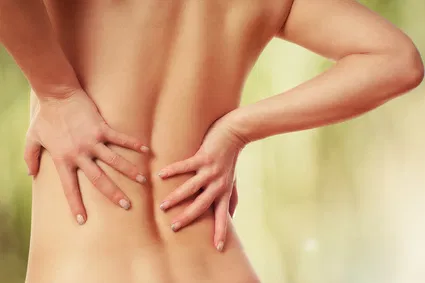
Even chronic pain can be caused by fascia adhesions. The more the tissue is stuck together, the easier it is for nerves or muscles to become trapped.
Fasciae stick together if the connective tissue is not stressed. So is it enough to exercise in some way? Not necessarily, because even very sporty people can have sticky fasciae. The reason for this is simply one-sided strain and too little stretching.
So no matter whether you run a lot, do extreme sports or just sit at home on the sofa - you should pay attention to your fasciae!
And that doesn't have to be complicated with regular fascia yoga.
How you can stretch the fascia with yoga
Don't worry, if you have already practised yoga, you don't have to get used to it. Fascia yoga often involves exercises from hatha yoga or yin yoga, with the big difference that the asanas are performed even more intensively or held for up to 5 minutes. By staying in a position for a long time, the fasciae are addressed and stimulated in the first place.
Fascia yoga also means that you change some movements only minimally and thus feel them much more intensely. The focus is on actively breathing into the parts of the body that are noticeably stressed.
During the flowing movements with stretching effect, the used tissue fluid is exchanged with fresh fluid. The fasciae can regenerate better and become more supple, so that the connective tissue becomes more dynamic and elastic in the long run. How practical that you can start with fascia yoga right at home without much effort!
Fascia Yoga: Exercises for beginners
There is no patent recipe for how often and for how long you should do fascia yoga. After all, it always depends on how mobile and active you already are. Basically, however, it is good for the fasciae if you concentrate on them once or twice a week during yoga. You can choose between fascia exercises with or without a roller.
Fascia exercises with roller
Of course, a roller is not a compulsory requirement for fascia yoga. However, with the fascia roller you can intensify individual exercises even better and stimulate the fascia tissue. It may be a little uncomfortable at first, as the fasciae are still stuck together.
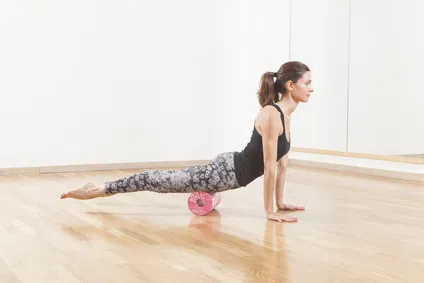
When doing exercises with the fascia roller, always listen carefully to your body and make the exercise less intense if it becomes too painful. However, the more often you do fascia yoga and the more supple your connective tissue becomes, the less uncomfortable it will feel.
For the first fascia asana with roller, lie on your back and raise your pelvis so that you can place the roller under your lower back. The palms rest loosely on the floor next to the hips. Now slowly and in a controlled manner pull both knees towards the chest.
Once you have found a stable position, you can begin to slowly shift your weight inch by inch in different directions. A variation of this would be to stretch the arms above the head and place the soles of the feet together so that the knees point outwards. Again, the lower back is on the roller.
The second exercise begins in the looking up dog: lie on your stomach and place the roller under your pelvis. Support yourself with your hands and stretch your arms so that your upper body is facing upwards, your shoulders are pulling down and your chest is wide open. Shift your weight again gradually in all directions and move as slowly as possible: it's not about many repetitions, but about the noticeable deep effect!
Fascia Yoga Exercises without a Roll
Individual fascia exercises are good, but a flowing movement is even better! You can also do the exercises without a roller directly one after the other:
- Forward bend
From a hip-width stance, roll downwards one vertebra at a time. Once you are fully bent forward, let your arms and head hang loosely. Now begin a slight rocking movement, bringing the upper body down a little further on the exhale and springing it back again on the inhale.
Move your upper body slightly to the left and right. Perform the bouncing 5-10 times. It is not about bobbing up and down as dynamically and intensely as possible, but simply about creating a noticeable stretch. It is best to do three rounds of this exercise, pausing in the next Asana in between:
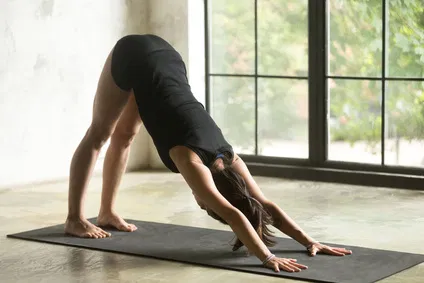
- Dog Looking Down (Variation)
From the forward bend, place the hands on the mat and move forward until you are in the top push-up position. Then push the buttocks up so that you arrive in classic downward dog.
Now alternately press one heel towards the floor and slightly bend the other leg. You should feel a stretch at the back of the stretched leg. When you feel you have had enough, go back to the first exercise.
- Lateral stretch:
Once you have completed the alternation of the first and second exercise, it is time for the lateral stretch: from your next forward bend, squat down and reach back with your hands so that you can slowly sit down. Tailor's seat or lotus seat - you decide.
Place the palm of the right hand on the floor beside you, stretch the left arm upwards and pull it over the head to the right. Bend the right arm slightly. The aim is to feel a stretch in the left side of the body. You can also create a slight bobbing motion at any time. Then switch to the other side.
As you can see, yoga exercises for the fascia are not that different from the yoga you may already know and practise. But even as a beginner you are in good hands with fascia yoga, because this much is certain: healthy connective tissue can certainly do no harm!
